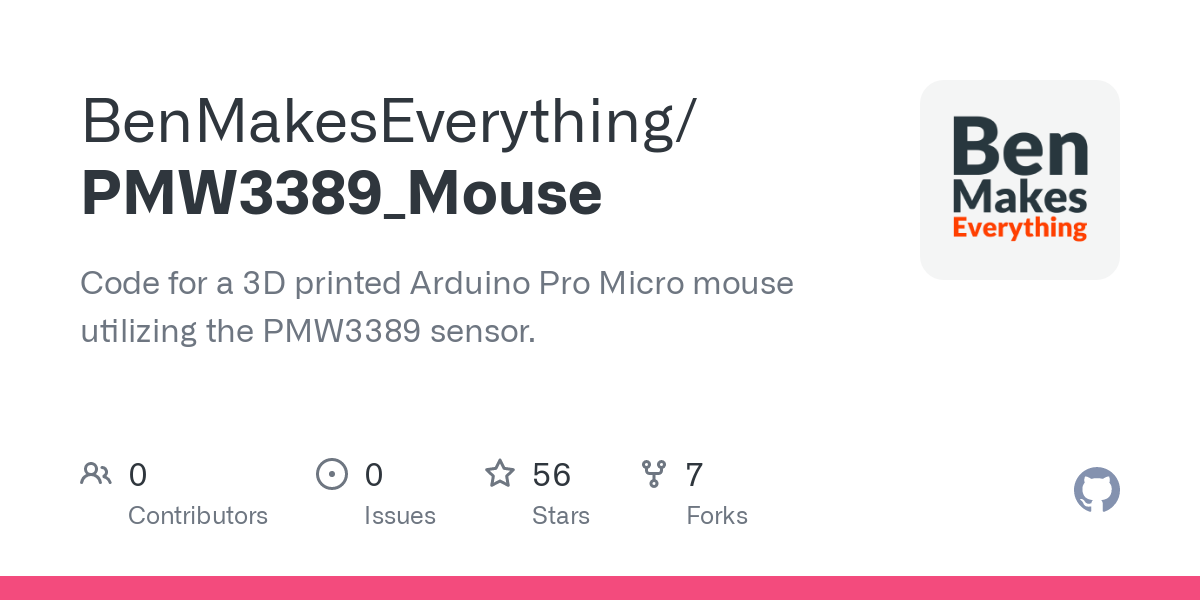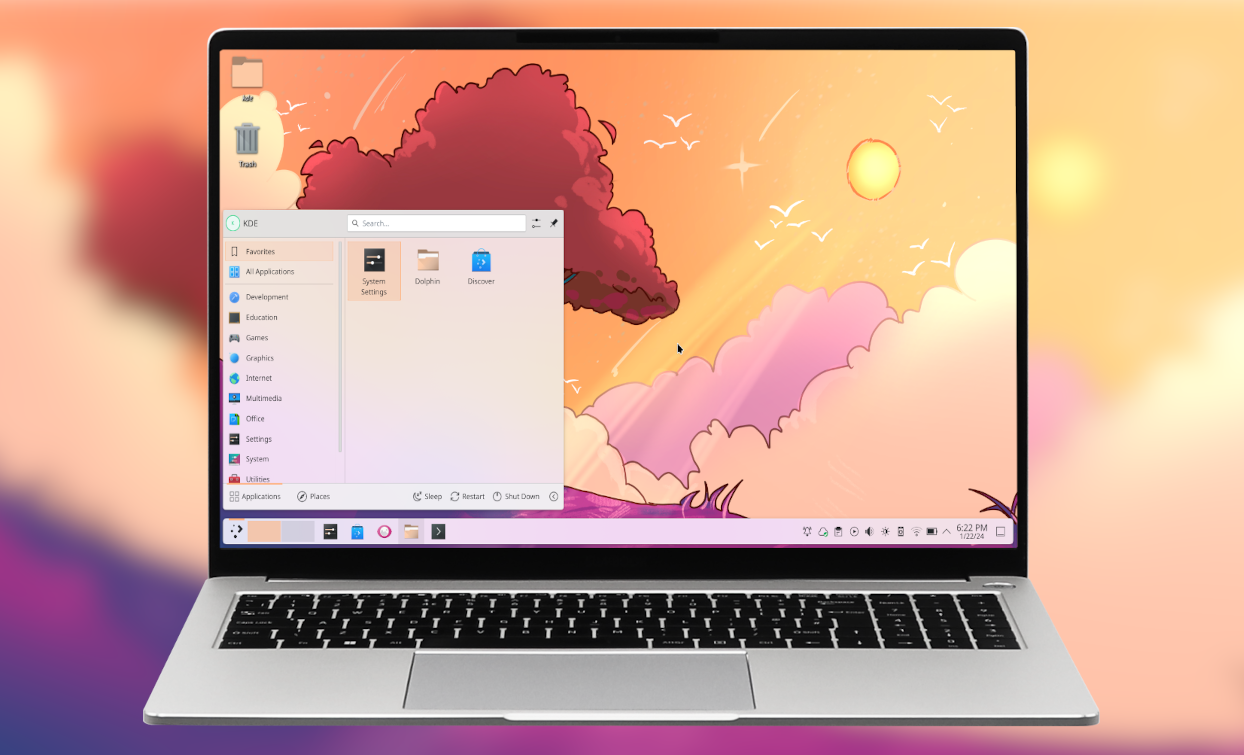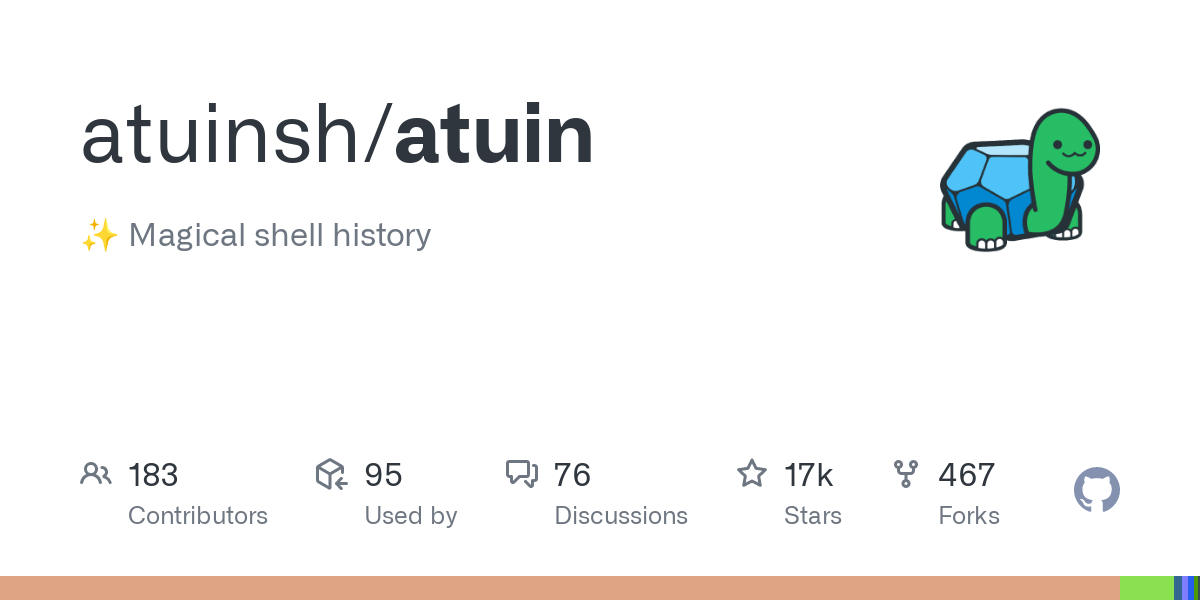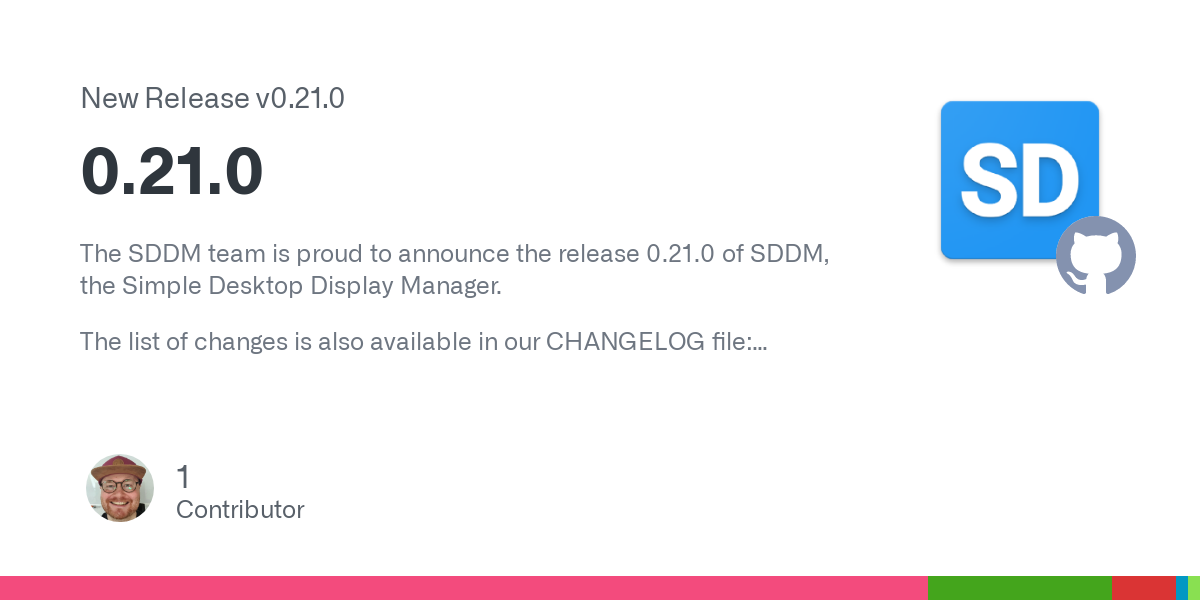- 7 Posts
- 21 Comments

 1·8 months ago
1·8 months agoThat depends on the beginner. We should consider which distribution to recommend depending on the user. Not every Linux newcomer is a typical Windows end user.
Apart from that, in my opinion, the relevant passage in the article is more about distributions that stand out from others. In my opinion, Arch is therefore only an example in this case and not a direct recommendation.
and if IIRC widgets and plasmoids work differently now.
https://develop.kde.org/docs/plasma/widget/porting_kf6/
https://develop.kde.org/docs/plasma/theme/theme-porting-to-plasma6/
So basically what KDE has done with Plasma 6 onwards. Wayland is standard, but you can still use X11 if required.
An understandable decision. At some point you have to start switching to Wayland.
On Arch Linux, Plasma 6.0.1 was released a few minutes ago in the testing package sources.
I am curious if this version will reach the official repositories or if there are still reasons to delay an official release.Edit: That went faster than expected. Plasma 6.0.1 has been moved from Testing to Extra.
As always, such statistics should be treated with caution.
What methodology is used to calculate Statcounter Global Stats?
Statcounter is a web analytics service. Our tracking code is installed on more than 1.5 million sites globally.
It is assumed that there are more than one billion websites worldwide. It is therefore not exactly unlikely that a Linux user will not access any of these 1.5 million websites.
Furthermore, it is quite common for Linux users to use tools such as Pi-Hole that simply block such statistics scripts. This means that these users would not be counted even if they accessed one of these 1.5 million websites. For my part, I also use computers with Linux that I don’t use to access websites. Some of these computers don’t even have access to the Internet. They are therefore not counted either.
Finally, let’s come to the most important point. Percentage values say not much if you don’t know the actual number of users behind them. Let’s assume, for example, that 3.5 per cent Linux users were detected in December and only 3 per cent in January. However, if the total number of users was higher in January, it is therefore possible that more users were detected in January.
Based on https://docs.atuin.sh/configuration/config/#search_mode, “fuzzy search” is used as standard.

 2·9 months ago
2·9 months agoI don’t have any use-case for a tiling window manager, for example, but I have zero intention of shitting all over various TWM projects whenever they’re brought up.
I feel the same way. I think tiling is useless (for me). Except in the terminal emulator. Strangely enough, I use it there.
I understand that Gnome kinda goes against the traditional desktop paradigm
Which is not a bad thing at first. Just because something has been done for years doesn’t necessarily mean it’s better.
The Helix editor, for example, uses the selection → action model. With vim, it is exactly the opposite. That’s why I prefer Helix. And yes, this is my own subjective opinion.

 71·9 months ago
71·9 months agoYou can find idiots in every group. Usually, however, these are always just the loud minority. I bet the majority of users simply use what they want and stay completely out of any discussions.
For my part, I have always used KDE / Plasma and I will continue to do so. Gnome just doesn’t appeal to me. Is Gnome therefore bad? No. I just prefer something else. Just like I use a different editor instead of vim, for example.

 8·9 months ago
8·9 months agoA dual boot system is not a big problem as long as you boot in EFI mode and use GPT partitions. I have been running a dual boot system (Windows 10 and Arch Linux) for years without any problems.
You should allocate around 500 MB for the EFI partition. This allows you to install Windows and a Linux distribution and still have reserves if you want to install additional Linux kernels, for example.
If you want to change partitions, first make a data backup on another data medium. Because something can always go wrong. Even if it’s just a power failure.
So the thing with Debian and any Debian based distro like Ubuntu or Linux Mint is there is no big centralized software repo like the AUR.
The platform for this would be available (https://mpr.makedeb.org).
Yes there is the apt repository but if you want something that’s not in there, get ready to read the documentation or follow random guides.
Not everything is available in the AUR either. It may therefore be necessary to create a own PKGBUILD file. And since anyone can publish something in the AUR, you should check the PKGBUILD file before installing or updating it. Both also require reading guides (https://wiki.archlinux.org/title/Arch_User_Repository, https://wiki.archlinux.org/title/PKGBUILD and so on).
On Arch, all I have to do is Paru -S Reaper,
This would give me the error message that the command was not found. Why do some people assume that everyone uses the same AUR helper as they do? I use aurutils, for example. This AUR helper offers more options but is more cumbersome to use in some cases.
Apart from that, the name of the package is reaper and not Reaper. So even if I would use paru, it would not work.
Now that Arch is so easy to install with the Archscript,
Easier? Yes. But archinstall had and still has some bugs. And archinstall, understandably, does not cover everything so that a manual installation is more flexible.
yeah yeah there’s flathub and stuff but that’s more of a last resort, optimally, you want to get it the correct way.
Appimages or flatpaks are often the correct way to go, as many projects only publish such packages.

 2·9 months ago
2·9 months agoIf I had to guess, I would say that the updates to Plasma 6 will be offered at the end of the week or in the course of next week. But I’m not an Arch developer, so that’s really a guess.

 12·9 months ago
12·9 months agoHowever, one should first read through https://wiki.archlinux.org/title/official_repositories#Testing_repositories and consider whether it is really worth the risk.
For my part, I will simply wait until Plasma 6 arrives in the official package sources.

 32·9 months ago
32·9 months agoand I’m glad that they took extra time to release rather than quickly shoving it out, a la Plasma 4 and early Plasma 5.
As far as I can remember, this was also the fault of some distributions that wanted to release Plasma 5 quickly, even though the developers of Plasma pointed out existing bugs.

 7·9 months ago
7·9 months agoTIL SDDM hasn’t gotten to 1.0 yet.
Many projects also deliberately avoid publishing a version 1.0. For example, the static website generator Hugo continued with 0.100.0 after version 0.99.1. The current version is 0.123.3.
This is mostly due to the fact that some users have the wrong expectations. For example, that version 1.0 is as good as error-free and fully developed.
How long has it been the de facto default greeter for KDE Plasma?
Since Plasma 5 if I’m not mistaken. Before that, KDM was the standard.
In my opinion, just because someone is behaving incorrectly is no reason to behave in the same way. One can also disagree with someone without using terms like moron or whiny bitch.

 5·9 months ago
5·9 months agoHow does pacman work compared to apt-get ?
Roughly speaking, pacman is faster, but offers fewer functions. And the parameters take some time getting used to. For example, you can update the system with
pacman -Syu.and how to find in which package an command lies.
You can either use the command
pacman -For the tool pkgfile.- https://wiki.archlinux.org/title/pacman
- https://wiki.archlinux.org/title/Pacman/Rosetta
- https://wiki.archlinux.org/title/pkgfile
I am struggling a bit with Zsh, like I ended up starting bash to configure an environment variable, any ressources on-it.
Without a more detailed description of the problem, it is difficult to help you. As I have been using ZSH for many years (also under Arch), I can only say that you have done something wrong. But if you don’t want to work much with the shell anyway, Bash is perfectly adequate.
But do yourself a favour and stay away from Manjaro. The team responsible for this distribution has already made so many avoidable mistakes and strange decisions that I don’t trust this distribution. And I’m not alone in this opinion. If you want a distribution based on Arch, there are better alternatives. Like EndeavourOS, for example.

 9·9 months ago
9·9 months agoNowadays, servers that are not connected to a monitor, keyboard or mouse are often referred to as headless. Regardless of whether they have a graphical user interface (which can be used with tools such as Guacamole, for example).
I’m not trying to say that this is correct, but simply to point out that the term “headless” is now often interpreted differently.






I have no experience with this project. I have been using a mouse from Zowie for several years under Linux, where all settings can be made with switches on the mouse so that no software is necessary.